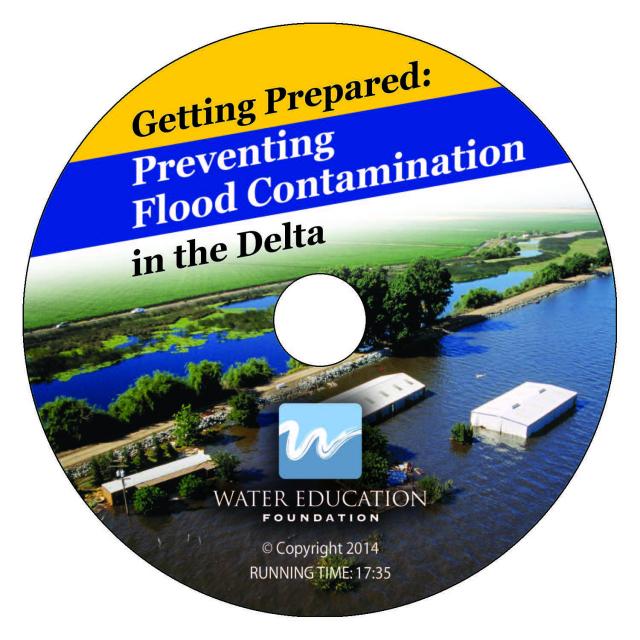Getting Prepared: Preventing Flood Contamination in the Delta
Running time 17:35
When it comes to flooding in the Sacramento-San Joaquin Delta, it’s not a matter of “if,” but “when.”
“Getting Prepared: Preventing Flood Contamination in the Delta” takes a look at the real threats of flooding in the Delta and what do to minimize the damage when it happens.
For more than 100 years, dangerous floods have struck the 700-plus-mile maze of sloughs and waterways known as the Sacramento – San Joaquin Delta.
Farms in the Delta have been vulnerable to flooding mostly due to one single factor: levee failures. While it’s expected that levee failures may occur during stormy conditions, sometimes levees breach for no apparent reason.
And for floods in the modern era, it’s not just water damage to fear. There’s the threat of a toxic soup formed by accidental mixtures of sewage, raw manure, fuel and oil, along with chemical contaminants typically used on farms.
Polluted water can compromise drinking and irrigation water initially and leave behind a contaminated mess in the soil, posing a threat to future crops and livestock.
This video discusses four actions to minimize damage, especially on agricultural lands:
- Keep a current inventory
- Safely store chemicals
- Dispose of waste frequently
- Recycle.
Delta farmers Ed Zuckerman and Steve Heringer talk about their flood experiences and share what flood preparations they’ve made.
Also learn about local and state programs – many free or low cost – to help farmers prepare, dispose of and recycle waste.
CLICK HERE to view the video (running time 17:35)

For more information on how to prepare for a flood or other
emergency, contact your county’s Office of Emergency Services:
Contra Costa: 925.228.500
Sacramento: 916.874.4670
San Joaquin: 209.953.6200
Solano: 707.784.1600
Yolo: 530.666.8150
California Office of Emergency Services
Do you have these in your household or on your property?
- Motor oil, transmission or brake fluid
- Fuel
- Antifreeze
- Agricultural or household pesticides
- Disinfectants or cleaners (ammonia, bleach, window or glass cleaner, etc.)
- Paint, paint thinners, paint strippers, stains or varnishes
- Batteries
Call your county to find out how to dispose of hazardous substances at a hazardous waste facility nearest to you.
- Contra Costa 800.750.4096
- Sacramento 916.875.5555
- San Joaquin 209.468.3000
- Solano 707.784.6765
- Yolo 530.666.8856
Contact the California Farm Bureau Federation at 916.561.5500.
Download the Delta Conservancy brochure: Preventing Flood Contamination in the Delta: Steps you can take to prevent potential contaminants from enter the water during a flood Preventing Flood Contamination in the Delta brochure
If you are interested in showing this video at a meeting or event, call Susan Lauer at the Water Education Foundation at 916.444.6240, or send her an email to get a free copy.
Special Thanks to (in order of appearance):
Ed Zuckerman, Zuckerman Family Farms
Stephen Heringer, Heringer Estates
Kathie Paveo, Courtland resident
Joel Dudas, California Department of Water Resources
Jim Allan, Solano County Agricultural Commissioner
Marissa Juhler, Manager of Yolo County Central Landfill
Christian Scheuring, California Farm Bureau Federation
Video Credits:
- Executive Producer: Water Education Foundation
- Producer: 3D Media Solutions
- Director: Dawn D. Deason
- Project Manager: Susan Lauer
- Post Production Audio Engineer: David Whitaker
- Camera: Rusty Rogers and Dawn D. Deason
- Narrator: Steve Campbell
- Field Audio: Charlene Jones
- Grip: Connie Mark
- Post Production Editor: Dawn D. Deason
- Motion Graphics Design: Kate Moore
- Historical photos courtesy of: Dutra Museum
Archive film courtesy of: California Department of Water Resources
Funding provided by: U.S. Bureau of Reclamation and the Sacramento-San Joaquin Delta Conservancy








